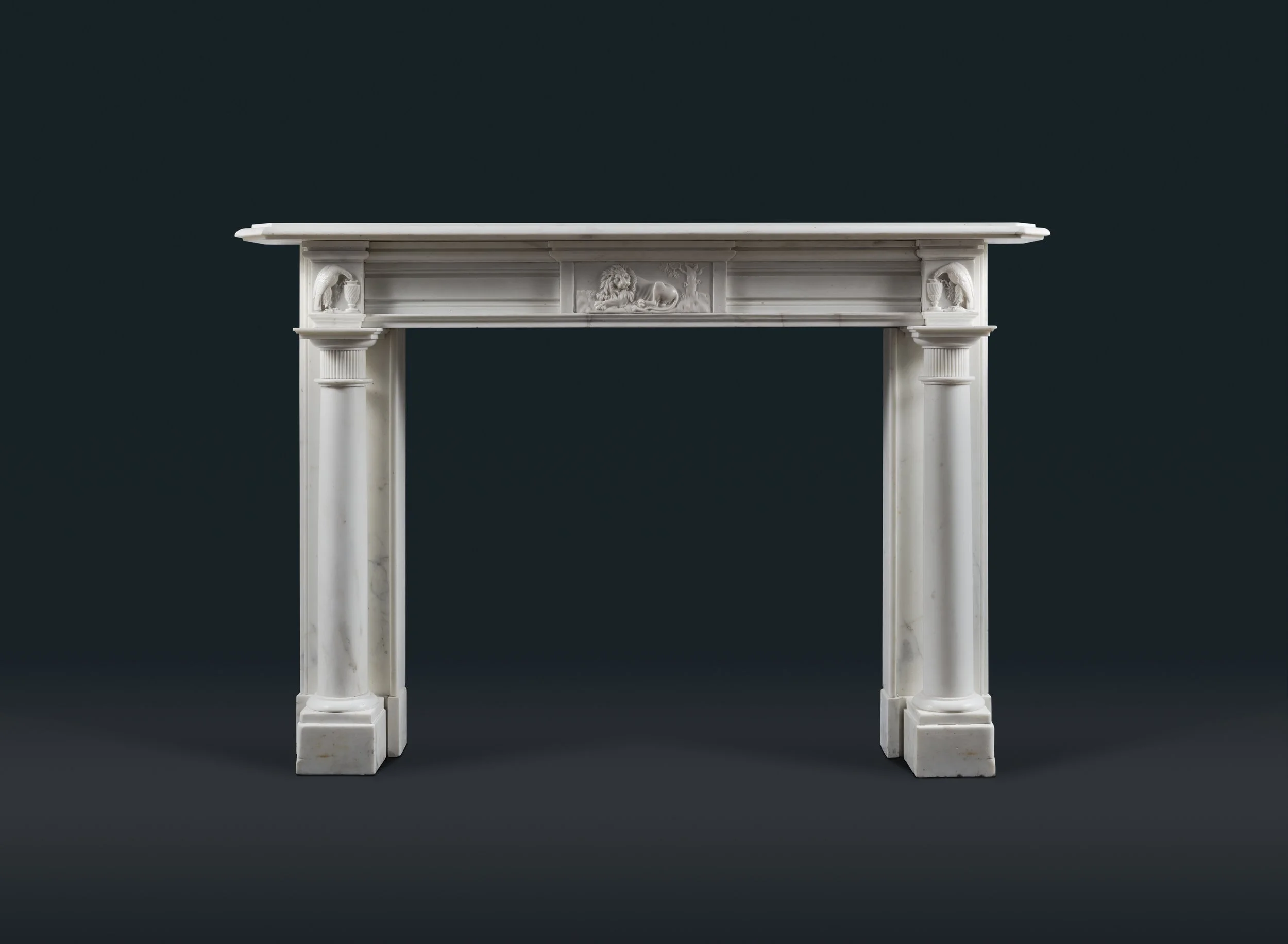GEORGIAN STATUARY MARBLE FIREPLACE SURROUND






English or possibly Irish, c.1820
A fine and distinguished Regency period Statuary Marble fireplace surround, with generous bed-mould below the canted-corner shelf, the central tablet showing a finely carved lion waiting at rest, the corner-blockings depicting eagles feeding from strigilated urns, all on disengaged Tuscan order column jambs. Exquisite craftsmanship and fabulous quality marble; a compelling centrepiece to any grand decorative scheme.
£27,500
AW010
-
Lions have held great significance throughout antiquity and were used to symbolise power and strength, majesty and awe. Perhaps the most famous example would be the legendary Nemean Lion, a beast with impenetrable fur and razor-sharp claws that no armour could defend against, its ultimate demise coming (literally) at the hands of Hercules during the first of his twelve labours.
The eagle – alongside its association with the God Jupiter – was the defining emblem of Roman power and was chosen by Gaius Marius to represent the army on the legionary standard (the Aquila) in 102 B.C. It was a symbol of military prowess, Imperial authority, protection and of course, victory.
Strigilation is a decorative motif often found on Roman sarcophagi where s-shaped channels are cut in the shape of Strigils (cleaning tools for scraping dirt and oil from the body).
Pure white marble has been the favoured material for statuarios (sculptors) since the ancient Romans started quarrying material from the Alpuan Alps in the first century BC. Fine and pure white marbles can be found throughout the region although many were stated as from Carrara due to its illustrious reputation (in 1862 the English Geologist William Jervis noted that marble from the newly stuck and nearby Massa quarries was traded as ‘Carrara’).
Originally known as marmo lunense as it was extracted from near the ancient Etruscan city of Luna, it was used architecturally for sculptures and for sarcophagi. It takes a very crisp carve; detail is accentuated by the heightened effect of shadow and the purity of the material means no detail is lost amongst vigorous figuring. Famous sculptures made from Marmo Statuario include Michelangelo’s David and The Kiss by Rodin.
-
Width 78½” / 199.5cm
Height 52½” / 133.5cm
Depth 12¼” / 31cm
Opening height 42½” / 108cm
Opening width 48¾” / 124cm
Width at base 69¼” / 176cm